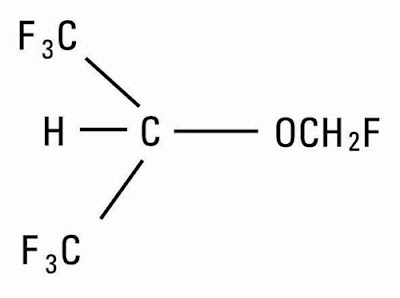Unleashing Innovation: Healthcare Fabrics of Tomorrow
 |
| Healthcare Fabrics |
In recent years, the healthcare industry has been undergoing
a profound transformation driven by technological advancements and a growing
emphasis on patient-centric care. Among the various innovations that have
gained attention is the development of advanced healthcare fabrics. These
fabrics go beyond traditional medical textiles and have the potential to
revolutionize patient care, infection control, comfort, and overall well-being.
The Evolution of
Healthcare Fabrics
Healthcare fabrics have a long history, dating back
centuries, when they were primarily used for bandages and dressing wounds. Over
time, the focus shifted towards ensuring patient comfort and safety.
Traditional healthcare fabrics were often utilitarian and sterile, designed for
one-time use and limited functionality.
However, with rapid technological progress and growing
consumer demands, the healthcare industry recognized the need for more
innovative solutions. This led to the development of advanced healthcare
fabrics that are multifunctional, durable, and aesthetically appealing, while
also addressing crucial medical requirements.
A Study By Coherent
Market Insights Says, The Global Healthcare Fabrics Market Was Valued At US$
22.22 Bn In 2022 And Is Forecast To Reach A Value Of US$ 46.95 Bn By 2030 At A
CAGR Of 9.8% Between 2023 And 2030.
Key Features of
Healthcare Fabrics
The Healthcare Fabrics
of tomorrow boast an array of innovative features that set them apart from
their predecessors:
1. Antimicrobial Properties: Advanced healthcare fabrics are
designed to inhibit the growth of harmful microorganisms, reducing the risk of
infections and improving hygiene standards in healthcare settings.
2. Moisture Management: These fabrics are engineered to wick
away moisture and maintain a dry environment, particularly vital for patients
with limited mobility or those undergoing intensive medical procedures.
3. Breathability and Comfort: Patient comfort is a top priority,
and modern healthcare fabrics prioritize breathability and softness to enhance
the overall patient experience.
4. Durability and Longevity: Unlike disposable textiles, the new
generation of healthcare fabrics is engineered for extended use, reducing waste
and healthcare costs.
5. Smart Textile Integration: The convergence of textiles and
technology allows for the integration of sensors and wearable devices, enabling
real-time monitoring and data collection for better patient outcomes.
6. Stain Resistance and Easy Cleaning: Healthcare fabrics are often exposed
to various spills and stains, and the new fabrics are designed to be easily
cleaned and maintained without compromising their integrity.
Applications of
Healthcare Fabrics
The applications of healthcare fabrics extend across
different healthcare settings, each catering to specific needs:
1. Hospital Bedding and Linens: Advanced fabrics used in hospital
bedding promote comfort, cleanliness, and infection prevention, fostering a
conducive healing environment.
2. Medical Uniforms and Apparel: Healthcare professionals benefit
from antimicrobial uniforms that protect both the wearer and patients from
potential cross-contamination.
3. Wound Dressings and Bandages: Wound care has been revolutionized
by innovative fabrics that facilitate faster healing, minimize scarring, and
provide enhanced protection.
4. Surgical Drapes and Gowns: Healthcare fabrics for surgical use
are now more lightweight, breathable, and protective, ensuring optimal
conditions for both patients and medical staff.
5. Patient Gowns and Clothing: Patient apparel made from advanced
fabrics allows for greater mobility, comfort, and dignity during hospital
stays.
Benefits of
Healthcare Fabrics
The integration of advanced fabrics in healthcare settings offers
numerous benefits:
1. Reduced Infections and Improved
Hygiene:
Antimicrobial properties significantly reduce the risk of healthcare-associated
infections, improving patient safety and outcomes.
2. Enhanced Patient Comfort: Soft, breathable fabrics contribute
to patient comfort and well-being, supporting the healing process.
3. Cost-Effectiveness: Durable, reusable fabrics lower
overall healthcare costs by reducing the need for frequent replacements.
4. Sustainability: By opting for reusable fabrics and
reducing waste, healthcare facilities can contribute to a more eco-friendly
approach to patient care.
5. Real-Time Monitoring and Data
Collection:
Integration of smart textiles enables continuous patient monitoring and data
collection, leading to more informed medical decisions.
Challenges and
Future Outlook
While healthcare fabrics of tomorrow hold tremendous promise,
there are some challenges to overcome:
1. Regulatory Compliance: Stricter regulations and standards
are required to ensure the safety and effectiveness of these innovative
fabrics.
2. Cost Barriers: Initial investments in advanced
healthcare fabrics may be higher, requiring healthcare facilities to assess the
long-term cost benefits.
3. Education and Adoption: Proper training and education for
healthcare professionals are essential to maximize the potential of these
fabrics.
The prevalence of disabilities is rising globally as a result
of a number of circumstances, such as long-term health issues, accidents, and
injuries. By giving people with disabilities tools and equipment specifically
suited to their needs, Assistive Technology is essential in helping them to fully engage in society.
The future of healthcare fabrics is exciting and promising,
with innovations that have the potential to revolutionize patient care,
infection control, and overall comfort. As technology continues to advance and
healthcare needs evolve, the integration of smart textiles and multifunctional
fabrics will play an increasingly vital role in shaping the future of
healthcare. By embracing these innovations and addressing the challenges ahead,
healthcare providers can unleash the true potential of healthcare fabrics of
tomorrow, ultimately improving patient outcomes and transforming the healthcare
industry.



Comments
Post a Comment